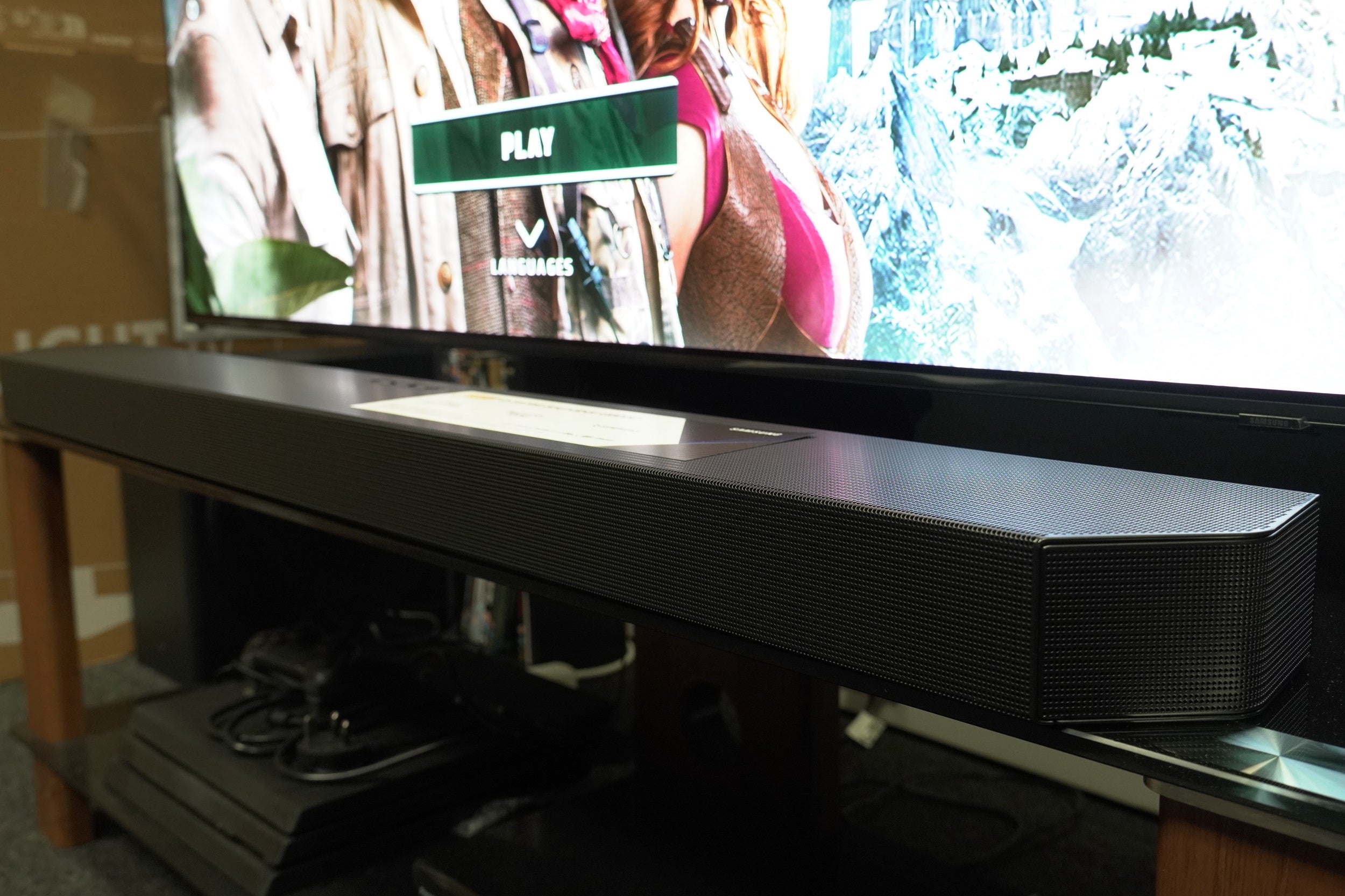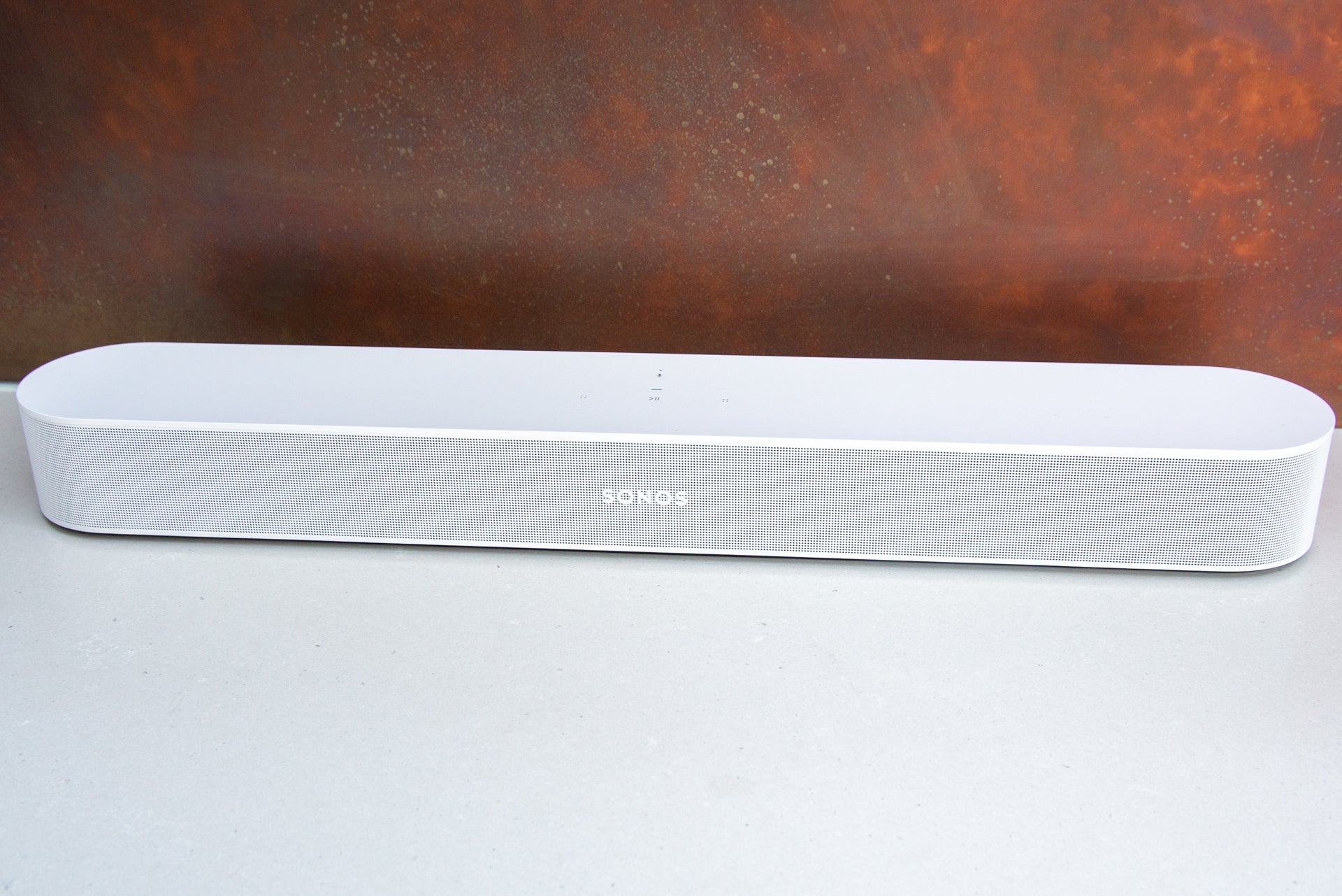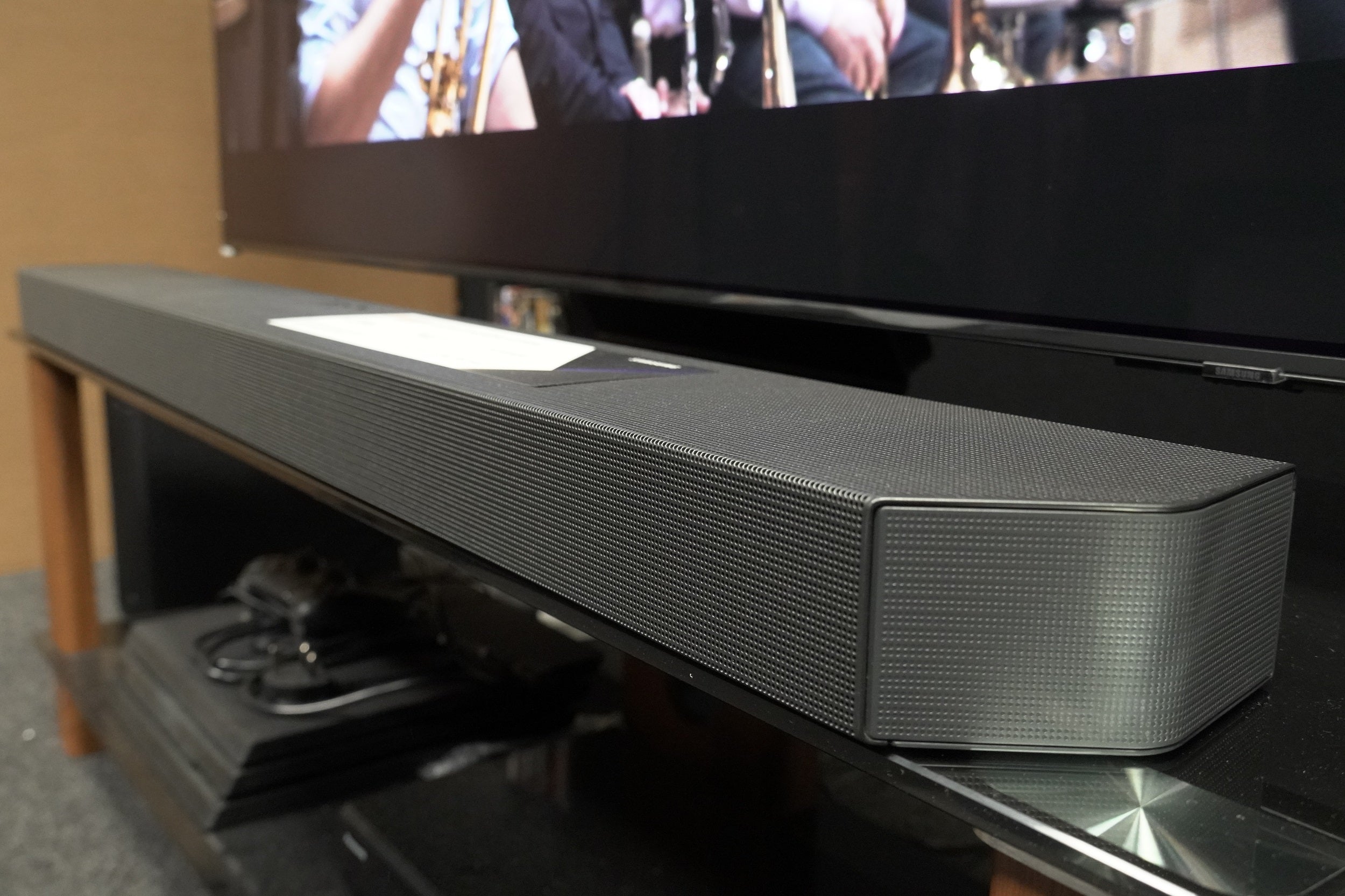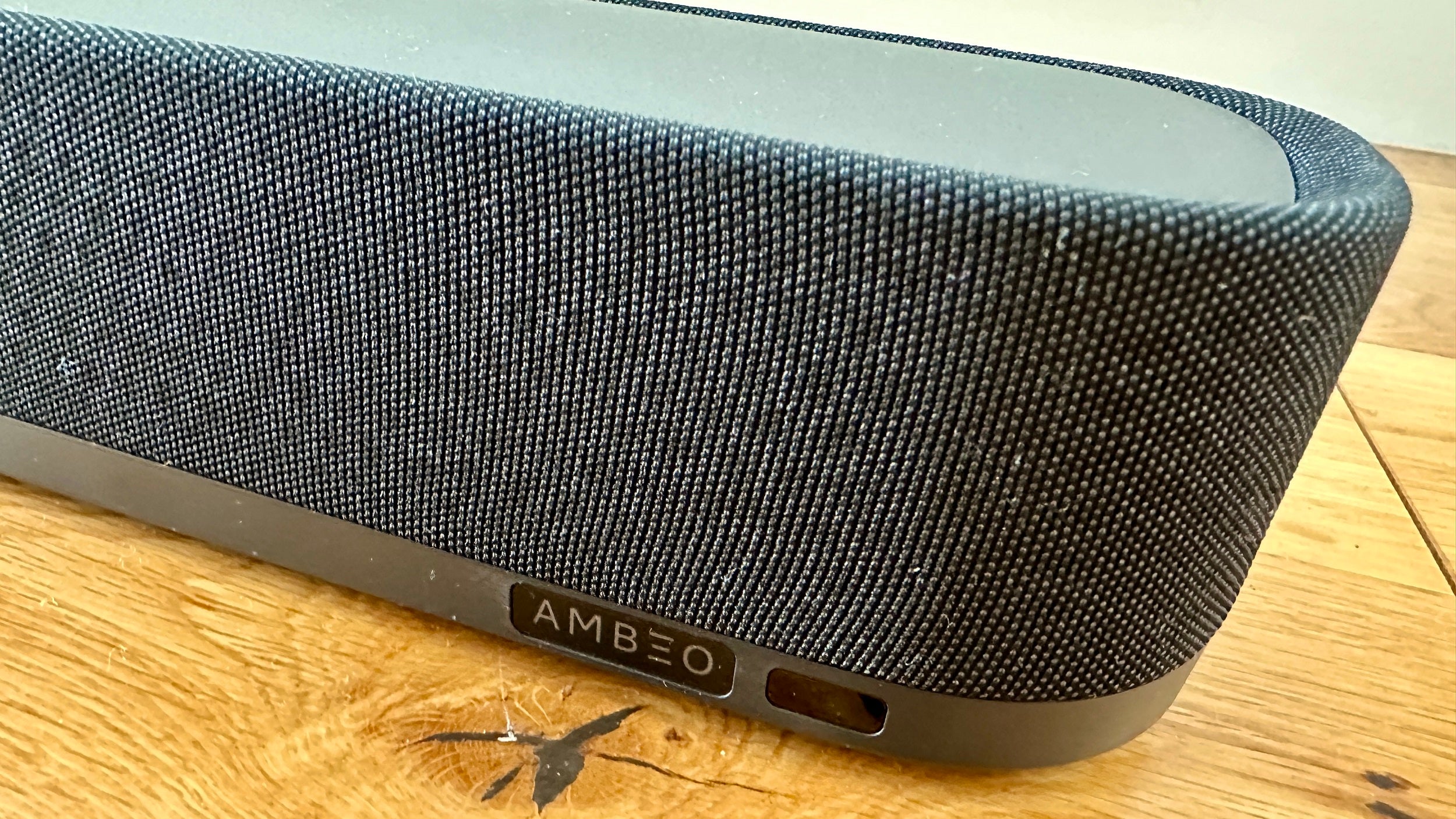Devialet Dione Review
A powerhouse of an Atmos bar
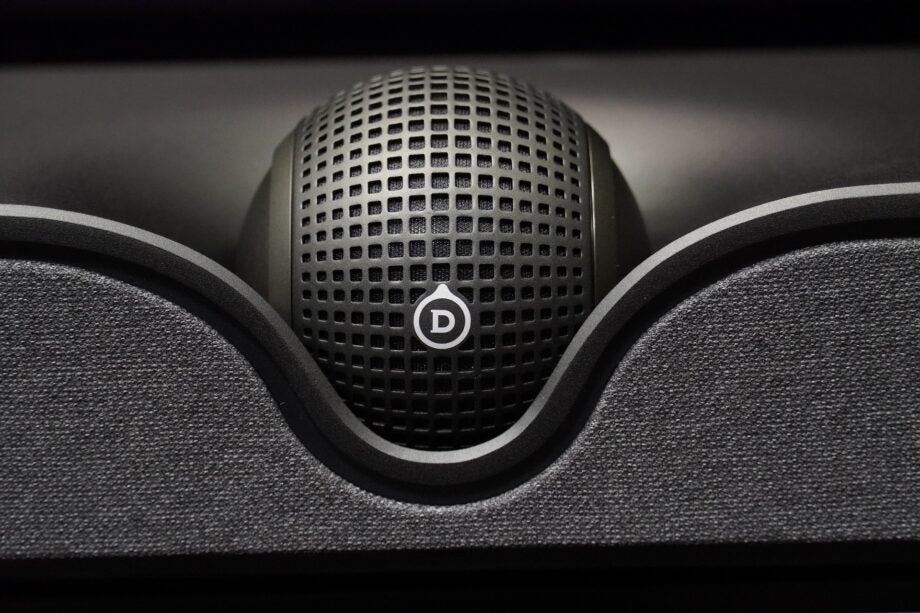

Verdict
An Atmos soundbar with a thunderous bass performance and immersive audio skills for an all-in-one system. The Devialet Dione entertains in spades, then, but it lacks a degree of dynamism and sounds a tad processed in how it handles film soundtracks.
Pros
- Expansive Atmos performance
- Clever centre speaker
- Weighty bass
- Good spatial mode for stereo content
Cons
- Not the greatest sense of dynamism
- Can be heavy-handed with bass performance
- No native DTS:X support
- Expensive
Key Features
- SPACEAlgorithm that upscales any mono or stereo signal into a 5.1.2 signal
- ORBCentre channel that can be repositioned based on orientation
- Multi-roomPartner with other speakers through AirPlay 2
Introduction
French audio brand Devialet is best known for its work in the hi-fi realm, but it hasn’t troubled the home cinema arena with its products – until now.
The Dione is Devialet’s first soundbar, and given the company’s knack for developing audiophile products, it has chosen to go down an ambitious route with the Dione, producing an all-in-one Dolby Atmos soundbar that doesn’t require assistance from surround speakers or a subwoofer.
It’s been in the making for more than two years and comes with a price tag that puts it within spitting distance of the Sennheiser AMBEO – one of the best Atmos soundbars on the market. So what do we make of Devialet’s first attempt?
Availability
- UKRRP: £1990
- USARRP: $2400
- EuropeRRP: €2190
- CanadaTBC
- AustraliaTBC
There’s a special edition of the Dione available in the Opéra de Paris that features 22-carat moon gold central plate that’s inspired by gilded interiors of Paris’ Opéra Garnier house. It’s priced at £2400 / €2900.
Design
- Rotating ORB speaker
- French slab of chic design
- Touch controls for operation
Lift the Dione out of its box and you’ll come to know that you’re handling something substantial. It weighs a hefty 12kg (Sony’s HT-A7000 is a mere 8.7kg), including 17 – yes, 17 – drivers inside its 77 x 1200 x 165mm (HWD) dimensions. Whether you’re putting this on a piece of furniture, a dedicated rack or wall, the surface will need to be substantial enough to accommodate this bar.
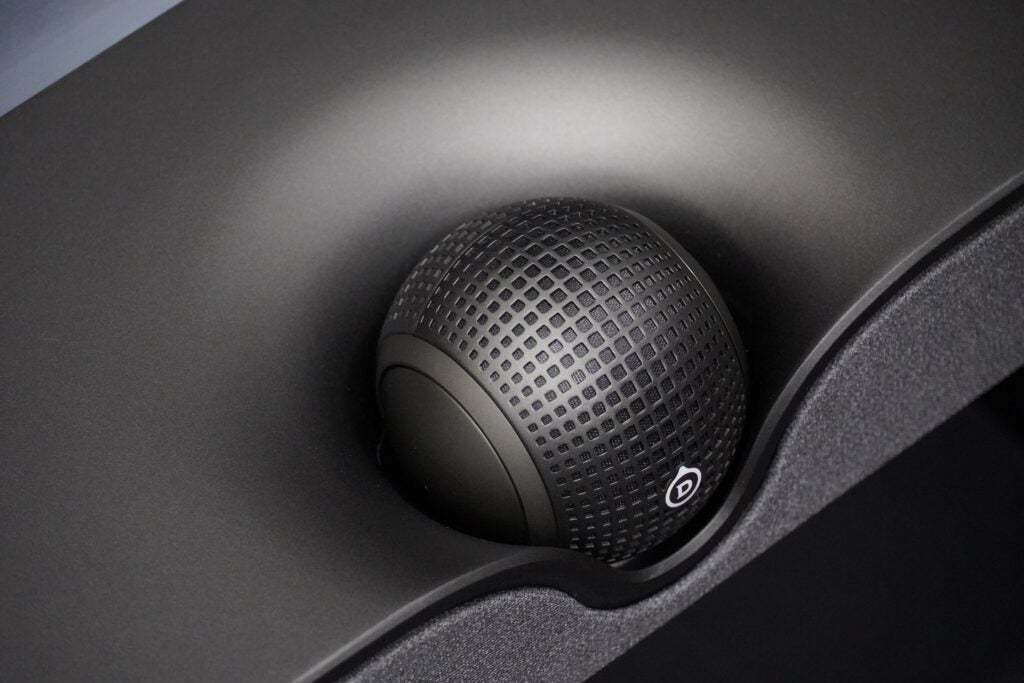
The height is actually 88mm, if you include the ORB speaker in the middle. The ORB functions as the bar’s centre speaker, and in a novel trick it can be repositioned for optimal delivery of audio, whether the soundbar is sitting on a flat surface or hanging from a wall. It just needs to be rotated and clicked into place.
The majority of the Dione’s core body is constructed from anodized aluminium, which is prone to smudges, so handle carefully. Tough PC-ABS (Polycarbonate/acrylonitrile butadiene styrene) is used for the rear, with most of the unit decked out in a dark grey acoustic fabric. I think the Dione looks fetching in a stately, minimalist way.
There’s a recessed area around the back for connections, with wall-mounting fixtures on its underside, and on the left side of the top surface are a series of touch controls.
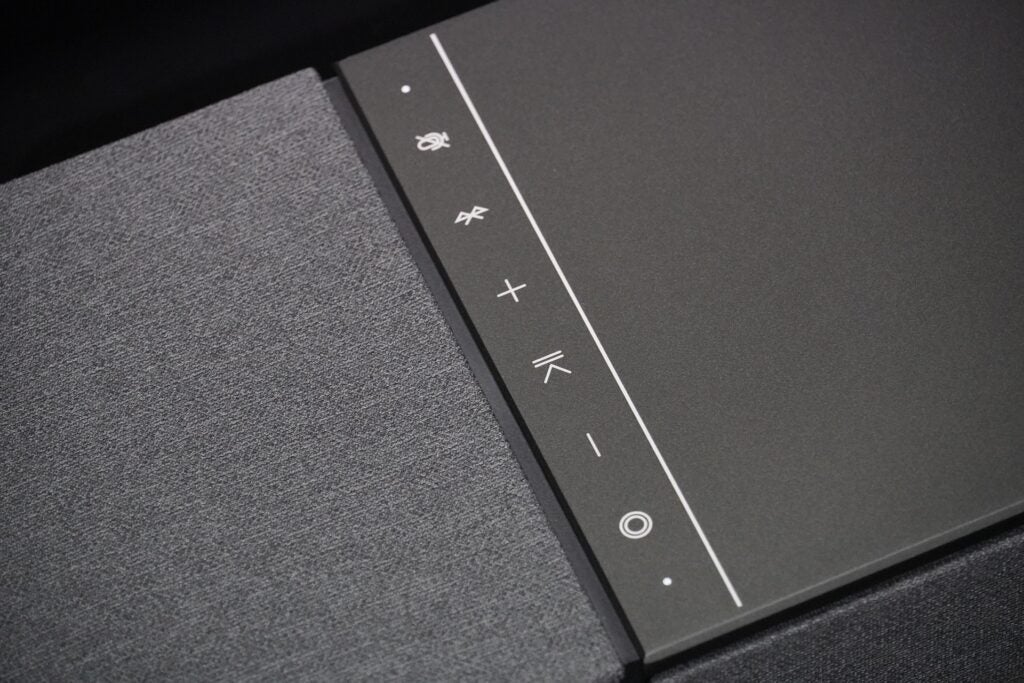
The soundbar doesn’t come with a remote, so the onboard controls are one of two ways of operation. The controls cover activating the soundbar’s built-in microphones, Bluetooth pairing, volume, playback control and a multi-function button for power/sources. There’s an LED light that’s just about bright enough to be visible from a seating position and can be turned off in the app.
Features
- Compatible with Phantom remote
- Dolby audio support
- Lots of specific, patented tech
As with any Devialet product, there’s a lot to sink your teeth into on the feature count. The company loves an acronym and capitalised letters, but before I get to those, lets first look at the various connections and driver setup.
There’s a HDMI 2.1 port (eARC/ARC and CEC compatibility), optical and an Ethernet for a hard-wired connection to the internet… and that’s it. The lack of an HDMI input is disappointing, a feature home cinema aficionados would have made use of. It suggests that, like the Bowers & Wilkins Panorama 3, this is a soundbar more interested in the lifestyle premium side of the market.
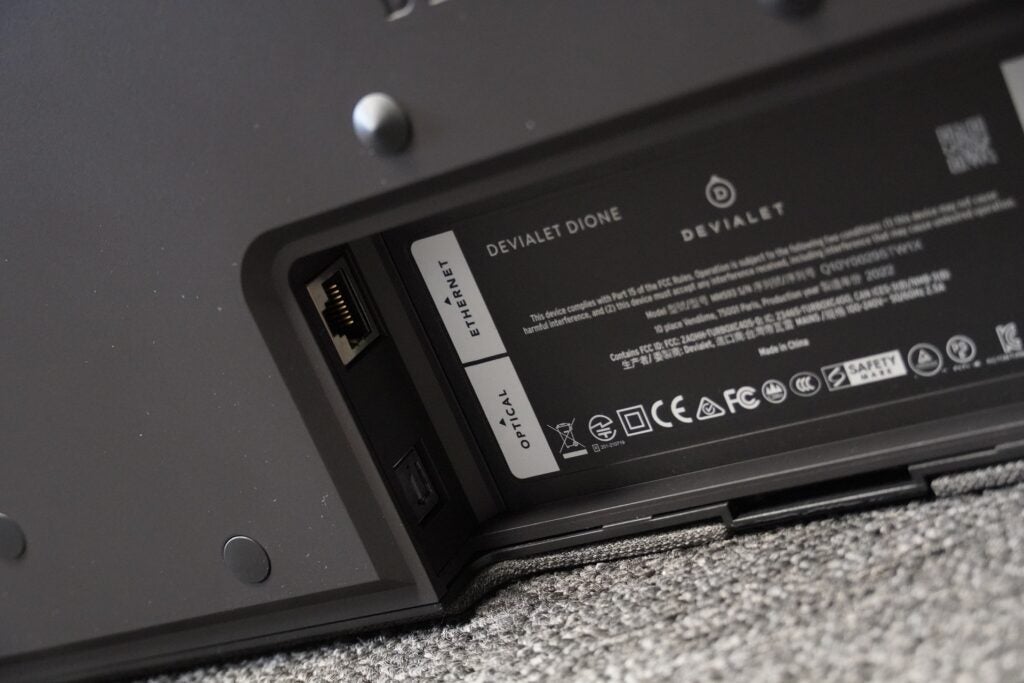
There are 17 drivers in the Dione’s 5.1.2 Atmos setup. That includes eight SAM-powered, long-throw woofers for deep “infrabass”, and nine full-range aluminium drivers that cover the rest of the frequency range. They’re driven by a seriously mighty 950W of amplification.
I mentioned earlier that there were two ways of operating the Dione, but technically there are three. The Phantom Remote is compatible, pairing to the bar via Bluetooth, for changing volume, play/pause and turning off the soundbar from the comfort of your sofa.
The remote is an optional extra, which means most will flock to the Devialet app (Android and iOS), which offers further functionality such as changing audio modes, seeing what track is playing or managing AirPlay 2, Bluetooth 5.0, Spotify Connect and UPnP wireless sources.
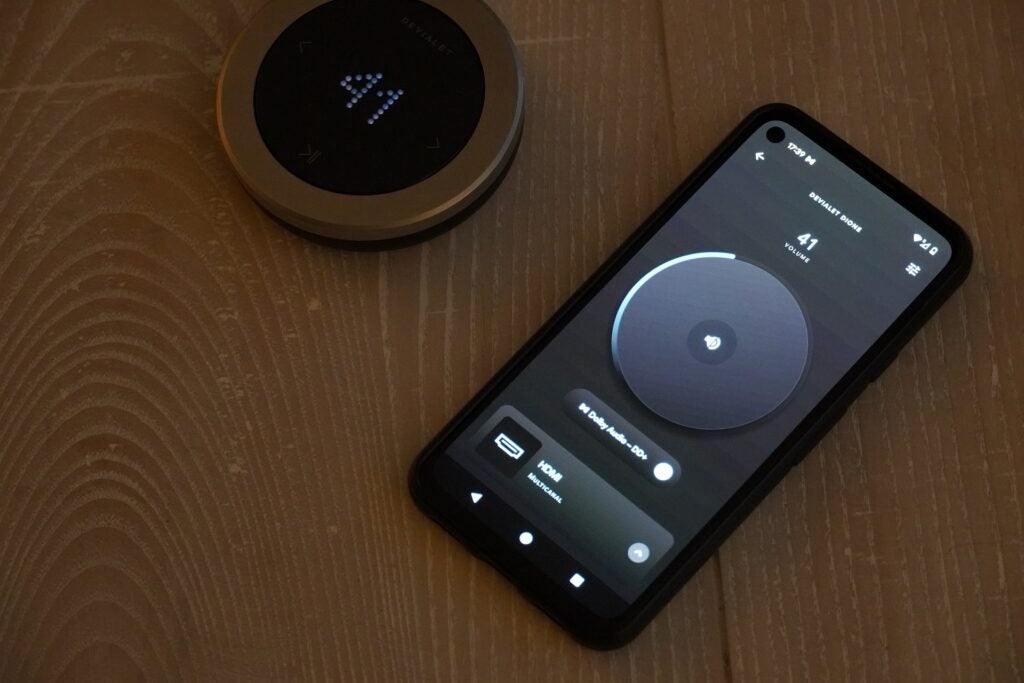
There’s no Chromecast and no Tidal Connect, and despite the presence of built-in microphones, no voice assistance either. The four microphones’ primary use is for room calibration, which is quickly and quietly done. You can delete old scans and start another if you move the Dione into another position.
Decoding of audio formats include PCM/LPCM, Dolby Digital, Dolby Digital Plus, Dolby TrueHD, Dolby Atmos; but there’s no native support for DTS. While there’s no native DTS:X support, it can play multichannel DTS audio by converting to PCM via the SPACE listening mode.
And so we get to the various acronyms and capitalised letters I mentioned earlier. SPACE is Devialet’s upmixing algorithm that upscales mono and stereo content into 5.1.2 audio. The idea is that any non-immersive audio can be upgraded into a spatial mix when activated.
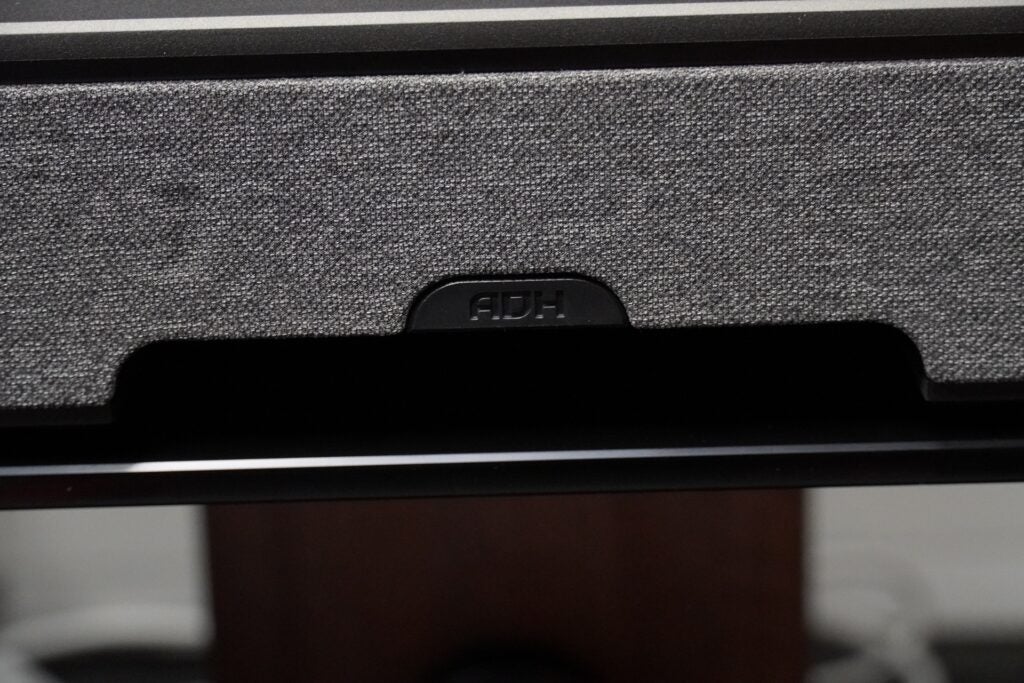
ADE stands for Advanced Dimensional Experience and it creates an immersive soundscape by reflecting sounds off walls and ceilings to give the impression of height and width. Once the room has been scanned, this beamforming technology will adapt the bar’s audio to the room’s acoustics, cancelling out any reflections that might spoil the performance. I should add that since it’s reflecting sound off nearby surfaces, a big, open room won’t necessarily do the Dione many favours.
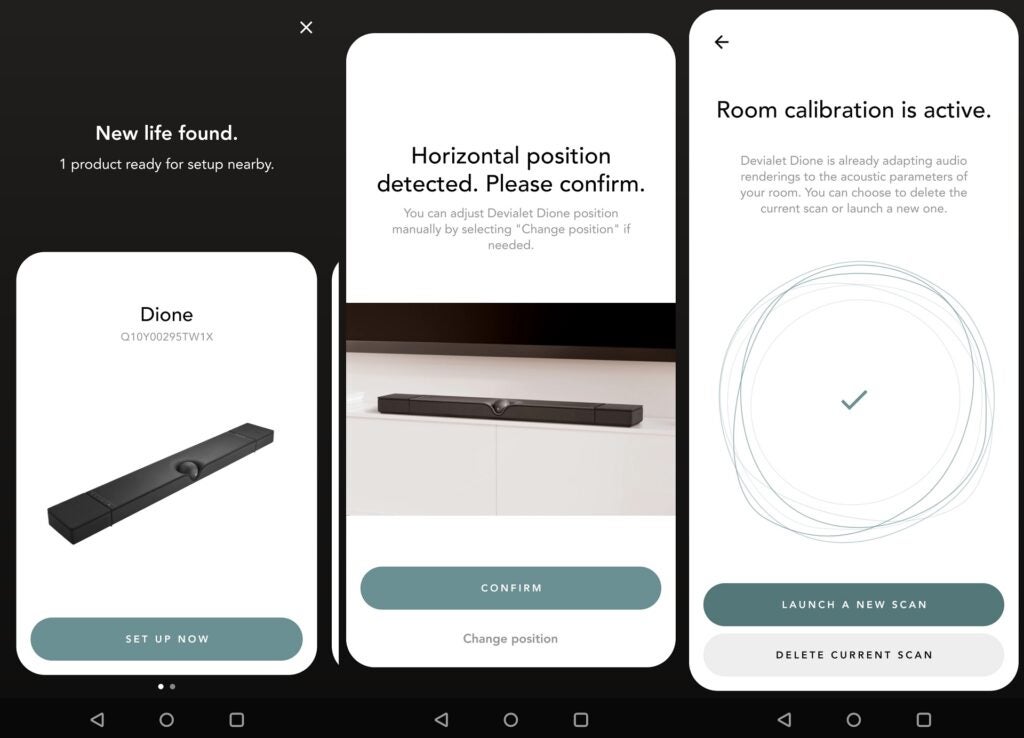
SAM is Speaker Active Matching, another feature that enhances the speaker’s delivery and bass response. AVL (Adaptive Volume Level) harmonises sound levels in the transition from say, an action scene to a dialogue scene. This aims to ensure scenes don’t bounce from something that’s too quiet to something that’s too loud.
Sound Quality
- No native DTS support
- Expansive height channels
- Transitions between loud and quiet stilted
The Devialet Dione is a beast in appearance and a beast in the performance stakes, although what you get from the Dione will depend on your room’s acoustics and size.
But before I get to that, let’s break down the Dione’s characteristics. Tonally, this is a smooth-sounding soundbar, similar to Samsung’s immersive bars than the overtly crisp playback of the Panorama 3 or HT-A7000. I’d actually prefer a crisp-sounding tone for films. In my opinion, it offers more punch and attack in the mid-range and bass frequencies.
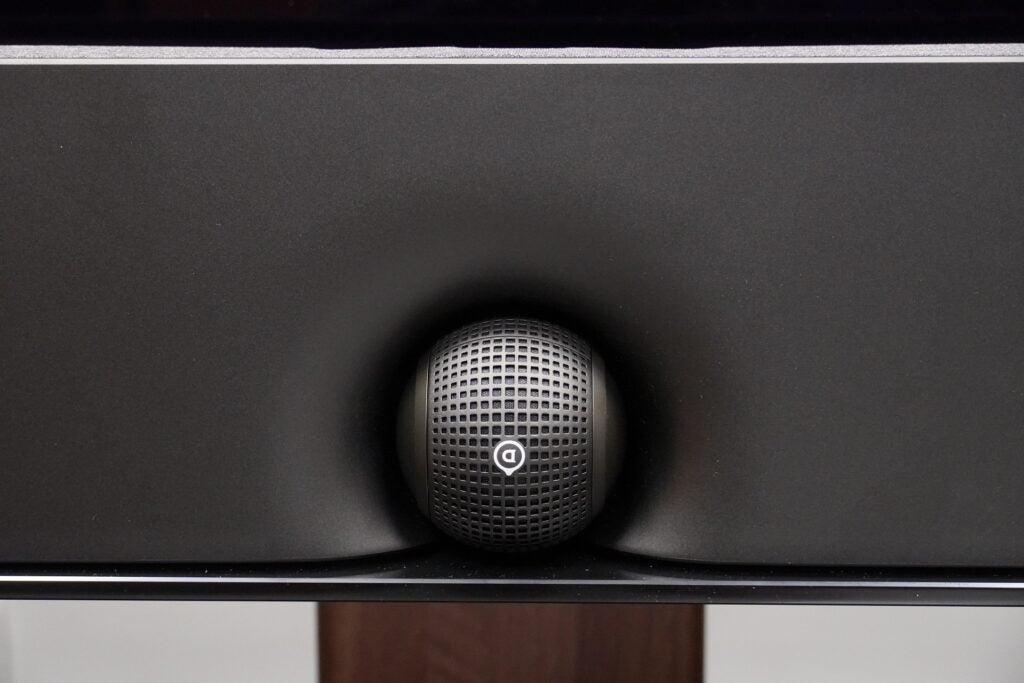
Nevertheless, the Dione’s smoothness helps with the reproduction of dialogue via its ORB centre speaker. Compared to the Panorama 3, the Dione manages dialogue with better clarity. The scene in Netflix’s The Dig, of the radio message of Britain’s entrance into WWII, comes through much clearer, and the same applies in Tenet, when Kat tells Andre to “burn in hell” in the catamaran sequence.
For an all-in-one soundbar option, bass is quite emphatically deployed. Dune and Tenet both feature plenty of meaty bass, with the Dione standing up to the challenge in a fearless manner: bass is delivered in a big, loud and explosive manner, enough to shake the room a bit. There isn’t necessarily the extension of low-end frequencies that a separate sub could provide, but you can feel that bass travel through the room just a little.
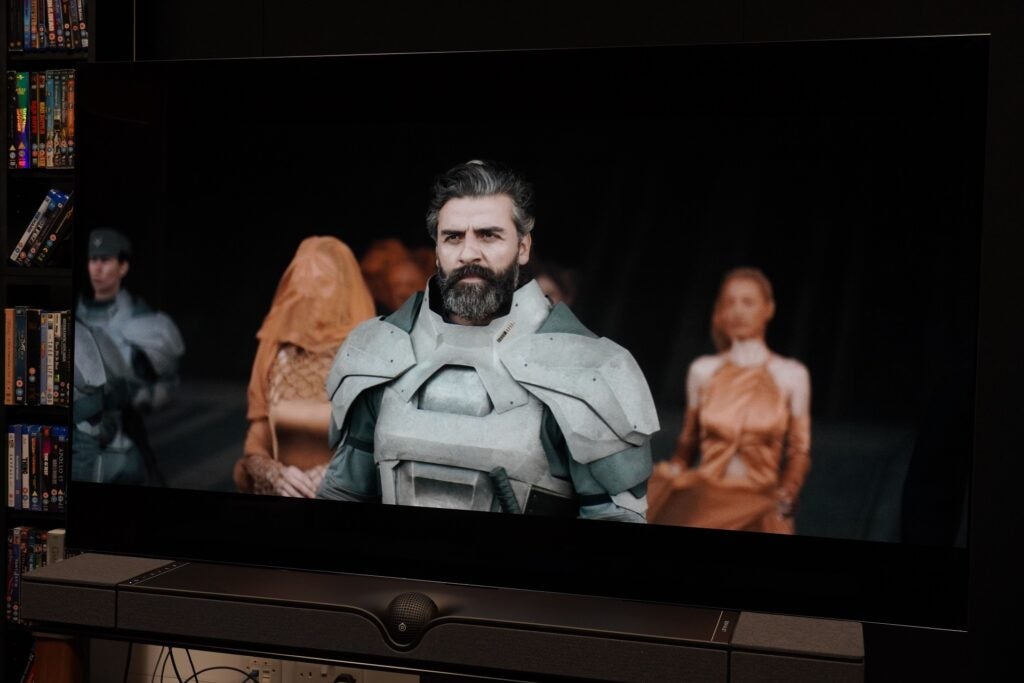
In terms height and width of the soundstage, this is where the size and shape of your room may have a more telling effect on the Dione. The testing facilities I have aren’t quite the best fit for beamforming since the walls are far apart, with a couch sitting in the way of one and the other “wall” is a glass door.
When I was sat through a demo of the Dione in a hotel room and shown the race sequence from Ready Player One, the firing of effects out wide were sensational, extending the width the sound way beyond the dimensions of the bar. In our test room, partnered with an LG C2, effects and dialogue were closer to where they were located on-screen, but the height channels were served well. I can hear K’s spinner come down from a long way up in Blade Runner 2049, and in Guardians of the Galaxy Vol.2, when Starlord flies around looking for scotch tape, the soundstage is described in a spacious manner, defined by a good sense of depth as he flies away; his voice becomes distant before heading back towards Rocket and baby Groot.
In Mother!, there’s neat tracking and panning of character’s voices as they roam the house; that sense of distance aids the film’s off-kilter sound design, with voices muttered here and there. The soundstage is, like everything else I’ve listened to on the Dione, spaciously decorated, the thrumming ambience of Him and Mother’s house a constant audible presence throughout the film.
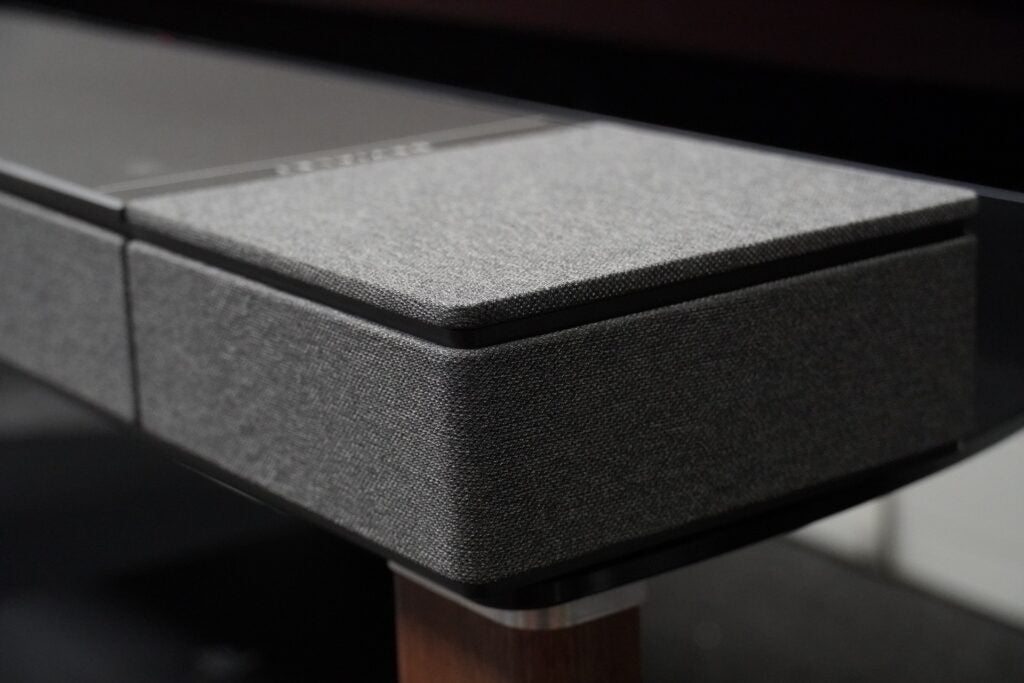
However, it’s in Mother! where the lack of a crisp tone sees the bar lose some points. The ringing sound that Jennifer Lawrence’s Mother hears isn’t as sharply relayed on the Dione, and therefore isn’t as unsettling or as piercing as it should be. The Devialet’s definition of the frequency’s top-end is blunted.
And while the bass offers substantial weight, there are times where it’s heavy-handed. The footsteps of Sapper Morton as he walks into his house in Blade Runner 2049 feels a touch overstated and slightly unnatural. I’ve never heard his footsteps delivered quite so heavily as they are on the Dione, and when he puts K through the wall, it’s as if he absolutely bludgeons him into it. It’s exciting, sure, but it also sounds as if the Dione overplays its hand.
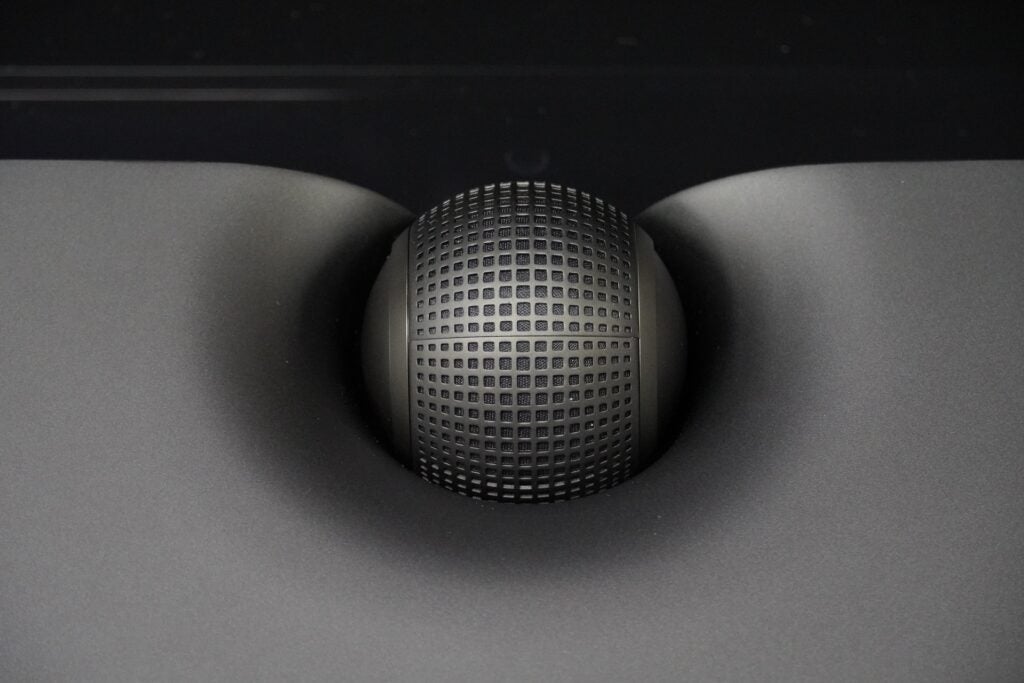
In Terminator: Dark Fate, the Dione doesn’t display the same explosiveness as the HT-A7000 from Grace’s shotgun as she unloads on the REV-9 in the factory scene, and while the chase scene that follows is weighty, when the dump truck smashes into cars on the highway, it sounds big and bloated rather than sharp and detailed. There’s a little subtlety and detail missing here.
And then there’s the Dione’s sense of dynamism, which isn’t profoundly deployed – an issue that crops up watching Netflix’s The Dig. There’s an emotional beat between Johnny Flynn’s Rory and Lily James’ Piggy: he’s heading off to serve in the war and comes to say goodbye; he turns around, she looks on longingly as he gets on his bike and the music swells, underscoring this as an “emotional” moment. Except it doesn’t transpire that way through the Dione.
The music doesn’t swell at all. In fact, the music, dialogue and effects level are all kept at an even keel, so nothing stands out. I suspect it’s the AVL at play, and what should be an emotional high point for both characters falls flat. The Devialet’s processing plays too active a role, and in another scene from the film where Carey Mulligan’s Ms Pretty is surrounded by a pack of reporters, the Dione doesn’t capture the commotion of the scene – again, it’s played rather flat. The Panorama 3 sounds more naturalistic in that context.
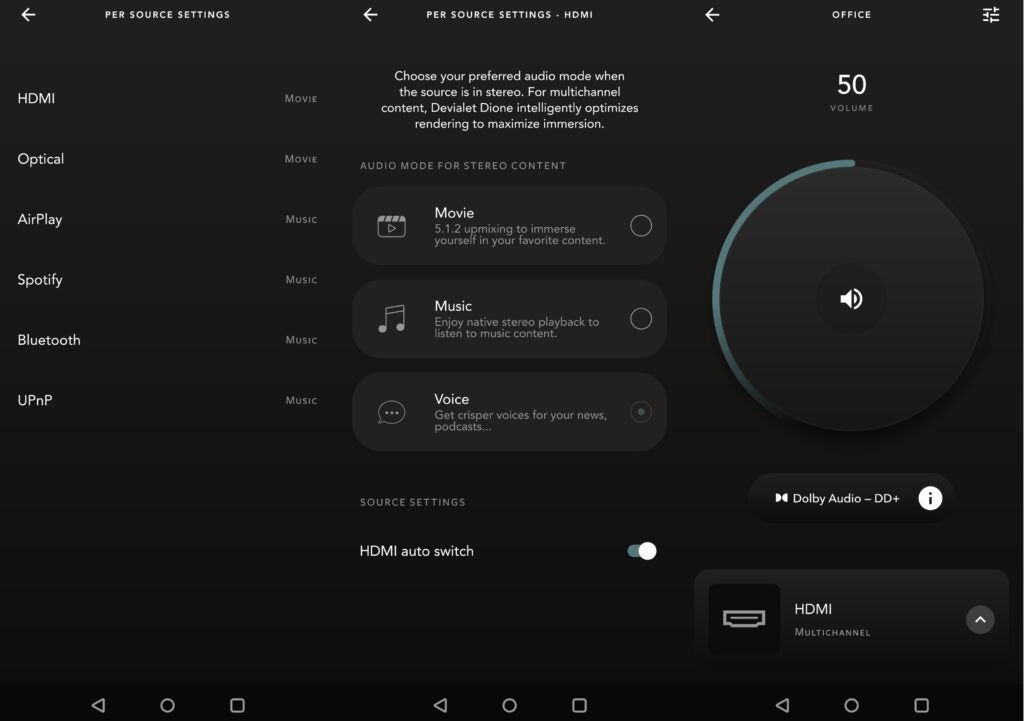
There are a few other audio modes to play with when listening to stereo content, and you can pair modes with specific sources in the app. Voice brings a slight change (I’d say improvement) compared to Movie with regards to the positioning of dialogue, delivering a crisper tone that still maintains the bar’s overall smoothness.
Moving on with music, again there’s a crisper tone to proceedings with the Music mode. Offering a choice of Bluetooth and Spotify Connect, the latter treats audio with more clarity, detail and better bass, with vocal clarity as you’d expect over a Bluetooth connection. A listen of the Football Weekly podcast over AirPlay 2 is similarly clear and crisp in its vocals, with no noticeable sibilant traces.
There were times where I’d prefer listening to music in the Spatial mode. It sounds bigger and lifts music above the bar, but the Music mode does sound more natural with Brigitte Bardot and Serge Gainsbourg’s Bonnie & Clyde. Whichever mode you opt for, the Dione sounds good – music playback is clean, detailed and nicely dynamic, the spatial mode adding more weight, energy and power to some tracks.
Latest deals
Should you buy it?
Big bass for an all-in-one bar The Dione delivers some of biggest bass I’ve heard from a single bar solution. If you like your films to deliver on the low-end, then the Dione delivers plenty of thrills.
You want a more naturalistic performer The Dione has a slightly heavy hand with regards to the processing in films; its tone isn’t always the most naturalistic or dynamic.
Final Thoughts
The Devialet Dione is an impressive effort from the French company. The bass is powerful for a single bar, dialogue reproduction is good, and the sense of height and width can expand the soundstage beyond the bar’s dimensions. If you can place it in a room that allows its beamforming skills to take centre stage, it can be a very skilled and highly entertaining performer.
But there are times where the hand of Devialet’s processing is too forcefully felt, that need to control aspects of the experience doesn’t always bear in the most naturalistic performance. There are also a few expected features missing, which means that while this is a likable Atmos bar, it’s a high price to pay when you can get similarly comparable performance by spending less.
How we test
We test every soundbar we review thoroughly over an extended period of time. We use industry standard tests to compare features properly. We’ll always tell you what we find. We never, ever, accept money to review a product.
Find out more about how we test in our ethics policy.
Tested for two weeks
Tested with films, music and TV
FAQs
The Dione doesn’t natively support DTS soundtracks, so you won’t get native DTS:X immersive sound. But, the Dione can take DTS multichannel tracks, convert them to PCM and then upconvert into an immersive mix similar to DTS:X with its SPACE listening mode.
Full specs
Sustainability
Trusted Reviews’ holds the fact that global warming is not a myth as a core value and will continuously endeavour to help protect our planet from harm in its business practices.
As part of this mission, whenever we review a product we send the company a series of questions to help us gauge and make transparent the impact the device has on the environment.
We currently haven’t received answers to the questions on this product, but will update this page the moment we do. You can see a detailed breakdown of the questions we ask and why in our sustainability info page.

